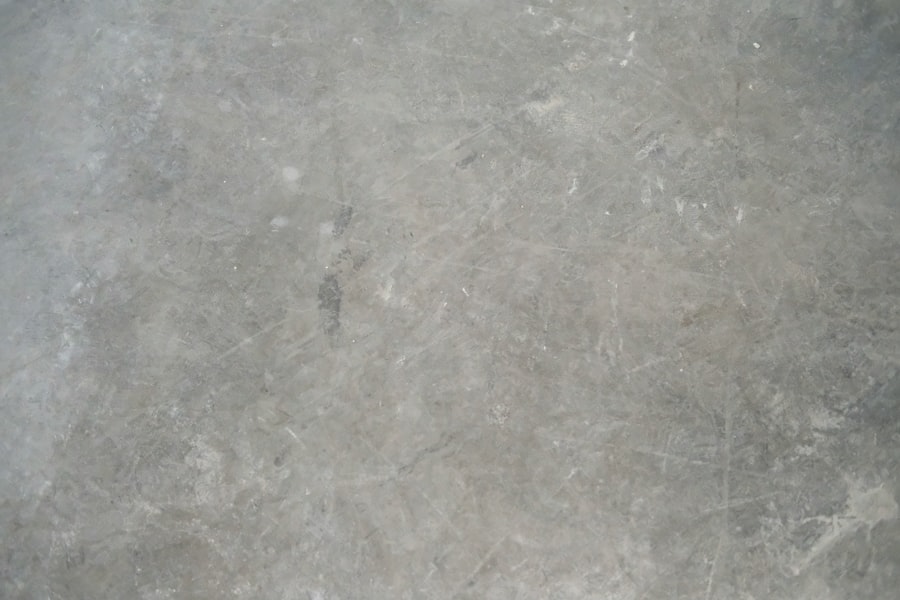
- By: admin
- Category: Commercial Floor Cleaning Machines
- 0 comment
**The Ultimate Guide to Choosing the Right Commercial Cleaning Equipment** In the fast-paced world of commercial cleaning, selecting the right equipment can make all the difference. With a myriad of options available, it’s essential to consider various factors that contribute to the effectiveness and efficiency of your cleaning operations. This guide will delve into the key aspects of commercial cleaning equipment, ensuring that contract cleaners, building managers, and facility managers are well-informed when making their choices.
Summary
- The vacuum cleaner boasts a durable and high-quality build, ensuring long-term reliability and performance.
- With its powerful cleaning capabilities and efficient operation, this vacuum cleaner delivers impressive results in a short amount of time.
- Its compact size and excellent maneuverability make it easy to navigate around furniture and tight spaces for a thorough clean.
- This versatile vacuum cleaner is adaptable to various surfaces and cleaning needs, providing a convenient solution for different tasks.
- The vacuum cleaner is designed to be water-efficient, reducing wastage and promoting environmental sustainability.
When investing in commercial cleaning equipment, durability and build quality should be at the forefront of your decision-making process. Equipment used in industrial settings is subjected to rigorous conditions, including heavy usage and exposure to various cleaning agents. Therefore, it is crucial to select machines constructed from high-quality materials that can withstand wear and tear over time.
Stainless steel components, for instance, are often preferred for their resistance to corrosion and ability to maintain structural integrity even in challenging environments. Moreover, a robust build quality not only extends the lifespan of the equipment but also reduces the frequency of repairs and replacements. This translates into significant cost savings for businesses in the long run.
When evaluating different models, look for those that come with warranties or guarantees, as these often indicate a manufacturer’s confidence in their product’s durability. Investing in well-built equipment is not just about immediate performance; it’s about ensuring reliability and longevity in your cleaning operations.
Cleaning Power and Efficiency
The cleaning power of your equipment is paramount in achieving optimal results. In commercial settings, where cleanliness is non-negotiable, having machines that deliver exceptional performance is essential. High-performance motors and advanced cleaning technologies can significantly enhance the effectiveness of your cleaning tasks.
For instance, vacuum cleaners with powerful suction capabilities can remove dirt and debris more efficiently than their less powerful counterparts. Efficiency is equally important; it’s not just about how well a machine cleans but also how quickly it can do so. Time is money in the commercial cleaning industry, and equipment that can cover large areas swiftly without compromising on quality can lead to increased productivity.
Look for machines that offer adjustable settings or multiple cleaning modes, allowing you to tailor their performance to suit different surfaces and levels of dirtiness. This adaptability ensures that you can tackle a variety of cleaning challenges with ease.
Size and Maneuverability

In commercial environments, space can often be at a premium. Therefore, the size and maneuverability of your cleaning equipment are critical factors to consider. Compact machines are often easier to store and transport, making them ideal for facilities with limited storage space.
However, it’s essential to strike a balance between size and performance; smaller machines should not sacrifice cleaning power for portability. Maneuverability is another key aspect that can greatly affect your cleaning efficiency. Equipment that is easy to navigate around furniture and tight corners can save valuable time during cleaning tasks.
Features such as swivel wheels or lightweight designs can enhance manoeuvrability, allowing operators to clean more effectively without straining themselves. Ultimately, choosing equipment that is both compact and easy to handle will streamline your cleaning processes and improve overall productivity.
Versatility and Adaptability
The versatility of cleaning equipment is a significant consideration for commercial applications. Different environments require different cleaning approaches; therefore, having machines that can adapt to various tasks is invaluable. For example, a multi-functional floor scrubber that can handle both hard surfaces and carpets can eliminate the need for multiple pieces of equipment, saving both time and money.
Additionally, consider equipment that comes with interchangeable attachments or accessories. These can enhance the machine’s functionality, allowing it to tackle a wider range of cleaning tasks—from high dusting to deep carpet cleaning—without the need for additional purchases. The ability to adapt your equipment to meet specific needs not only maximises its utility but also ensures that you are prepared for any cleaning challenge that may arise.
Water Usage and Efficiency
In an era where sustainability is becoming increasingly important, water usage efficiency is a critical factor in selecting commercial cleaning equipment. Machines that utilise water efficiently not only reduce environmental impact but also lower operational costs associated with water consumption. Look for models that feature advanced water management systems, which optimise water usage while still delivering effective cleaning results.
Moreover, consider the type of cleaning solution used in conjunction with water.
By choosing equipment that promotes water efficiency and sustainable practices, you not only contribute positively to environmental conservation but also align your business with the growing demand for eco-conscious practices in the commercial sector.
Noise Level and Environmental Impact

Noise pollution is an often-overlooked aspect of commercial cleaning operations. High noise levels can disrupt workplaces, disturb customers, and even affect employee productivity. Therefore, selecting equipment with low noise emissions is essential for maintaining a conducive working environment.
Many manufacturers now offer machines designed specifically for quiet operation without compromising on performance. In addition to noise levels, consider the overall environmental impact of your cleaning equipment. This includes not only noise but also emissions from powered machines.
By prioritising low-noise and environmentally friendly equipment, you create a more pleasant atmosphere for both employees and clients while demonstrating your commitment to sustainability.
Ease of Maintenance and Repair
The ease of maintenance and repair is another crucial factor when selecting commercial cleaning equipment. Machines that are difficult to maintain can lead to prolonged downtime and increased operational costs due to repairs or replacements. Look for models designed with user-friendly maintenance features, such as easily accessible filters or components that can be replaced without specialised tools.
Regular maintenance is essential for ensuring optimal performance and longevity of your equipment. Therefore, consider manufacturers that provide comprehensive support services or readily available spare parts. A reliable service network can make all the difference when it comes to keeping your equipment in top condition.
By investing in machines that are easy to maintain and repair, you ensure minimal disruption to your cleaning operations.
Battery Life and Charging Time
For battery-operated cleaning equipment, battery life and charging time are critical considerations. In commercial settings where time is often of the essence, having machines that can operate for extended periods without frequent recharging is essential. Look for models equipped with high-capacity batteries that offer longer run times, allowing you to complete larger tasks without interruption.
Charging time is equally important; machines that require lengthy charging periods can hinder productivity during busy shifts. Opting for equipment with rapid charging capabilities ensures that your machines are ready for use when needed most. By carefully evaluating battery life and charging times, you can select equipment that aligns with your operational needs while maximising efficiency.
Ergonomic Design and User Comfort
The design of your cleaning equipment plays a significant role in user comfort and overall productivity. Ergonomically designed machines reduce strain on operators during use, which is particularly important in commercial settings where staff may be on their feet for extended periods. Features such as adjustable handles, lightweight designs, and comfortable grips can make a substantial difference in user experience.
Moreover, investing in ergonomic equipment can lead to reduced injury rates among staff members, ultimately lowering costs associated with workplace injuries or absenteeism. When selecting cleaning machines, prioritise those designed with user comfort in mind; this not only enhances productivity but also fosters a healthier work environment.
Safety Features and Hazard Prevention
Safety should always be a top priority when selecting commercial cleaning equipment. Machines equipped with safety features such as automatic shut-off systems or emergency stop buttons can prevent accidents and injuries during operation. Additionally, consider models that include safety certifications or compliance with industry standards; this ensures that they meet necessary safety regulations.
Furthermore, hazard prevention extends beyond just the machinery itself; consider how the equipment interacts with its environment. For instance, non-slip wheels or low-profile designs can help prevent accidents while navigating busy areas. By prioritising safety features in your equipment selection process, you create a safer working environment for your staff while minimising potential liabilities.
Cost and Value for Money
Finally, cost is an inevitable consideration when investing in commercial cleaning equipment. However, it’s essential to look beyond the initial purchase price and evaluate the overall value for money offered by each machine. Consider factors such as durability, maintenance costs, efficiency, and potential savings over time when assessing value.
While it may be tempting to opt for cheaper options upfront, investing in high-quality equipment often pays off in the long run through reduced maintenance costs and improved performance. Additionally, consider the potential return on investment (ROI) associated with increased productivity and enhanced cleaning results. By taking a holistic approach to cost evaluation, you ensure that you make informed decisions that benefit your business both now and in the future.
In conclusion, selecting the right commercial cleaning equipment involves careful consideration of various factors ranging from durability to cost-effectiveness. By prioritising these aspects—durability and build quality, cleaning power and efficiency, size and manoeuvrability, versatility and adaptability—among others—you can ensure that your investment meets the demands of your specific environment while delivering exceptional results. With informed choices at hand, contract cleaners, building managers, and facility managers alike can enhance their operations and achieve superior cleanliness standards across their facilities.
FAQs
What are the key features to look for in a commercial tile scrubber?
Some key features to look for in a commercial tile scrubber include:
– Brush type and size
– Cleaning width
– Water capacity
– Maneuverability
– Power source
– Adjustable settings
– Durability and build quality
What brush type and size should I look for in a commercial tile scrubber?
The brush type and size you should look for in a commercial tile scrubber depend on the type of tiles you will be cleaning. Soft brushes are suitable for delicate tiles, while stiff brushes are better for tougher stains. The size of the brush should match the size of the tiles for efficient cleaning.
What is the ideal cleaning width for a commercial tile scrubber?
The ideal cleaning width for a commercial tile scrubber depends on the size of the area you will be cleaning. A wider cleaning width is more efficient for larger areas, while a narrower cleaning width is suitable for smaller, more confined spaces.
How important is water capacity in a commercial tile scrubber?
Water capacity is important in a commercial tile scrubber as it determines how long you can clean before needing to refill the tank. A larger water capacity is ideal for larger areas, while a smaller capacity may be sufficient for smaller spaces.
What should I consider in terms of maneuverability when choosing a commercial tile scrubber?
When choosing a commercial tile scrubber, consider factors such as the size and weight of the machine, as well as its ability to maneuver around obstacles and tight spaces. Look for features such as swivel steering and adjustable handles for improved maneuverability.
What power source options are available for commercial tile scrubbers?
Commercial tile scrubbers are available in electric, battery-powered, and propane-powered options. Electric scrubbers are suitable for indoor use with access to power outlets, while battery-powered and propane-powered scrubbers offer more flexibility for outdoor and larger spaces.
Why are adjustable settings important in a commercial tile scrubber?
Adjustable settings in a commercial tile scrubber allow you to customize the cleaning process based on the type of tiles and level of dirt and grime. Look for adjustable brush pressure, water flow, and speed settings for optimal cleaning results.
How can I ensure the durability and build quality of a commercial tile scrubber?
To ensure the durability and build quality of a commercial tile scrubber, look for features such as a sturdy construction, high-quality materials, and a reputable brand with a track record of reliability. Reading customer reviews and seeking recommendations can also help in assessing the durability of a scrubber.
– Brush type and size
– Cleaning width
– Water capacity
– Maneuverability
– Power source
– Adjustable settings
– Durability and build quality
